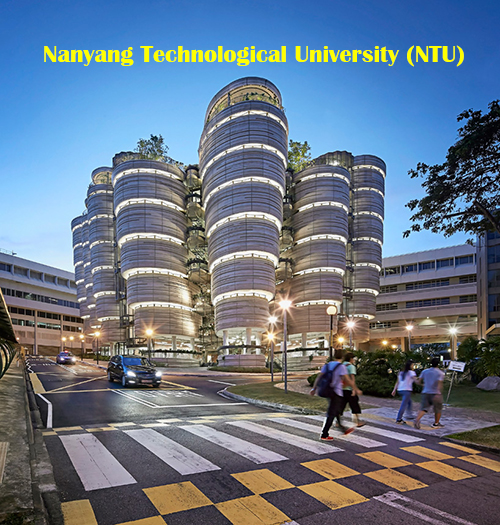Thinking of studying in Asia? Then you may want to check out Southeast Asia’s leading international higher education hubs: Malaysia and Singapore.
Singapore is already a well-established study destination, with its universities attracting hoards of international students each year. Indeed, attracting “the best and the brightest students from around the world” is a central focus for the country’s flagship institution, the National University of Singapore, according to Professor Mohan S. Kankanhalli, Associate Provost of Graduate Education.
Singapore is already a well-established study destination, with its universities attracting hoards of international students each year. Indeed, attracting “the best and the brightest students from around the world” is a central focus for the country’s flagship institution, the National University of Singapore, according to Professor Mohan S. Kankanhalli, Associate Provost of Graduate Education.

Universities in Singapore: Rising stars
Attracting top students is certainly made easier by the upwards trajectory of Singaporean institutions in the university rankings. NUS ranked 25th in the world in the 2012/13 QS World University Rankings, and Nanyang Technological University (NTU) is also in the world’s top 50.
In the 2013 QS University Ranking: Asia, NUS ranked 2= (joint with the University of Hong Kong), and NTU made an impressive leap from 17th to 10= (joint with Kyoto University). Both have an especially strong reputation among graduate employers – in the results of QS’s global survey of employers, NUS is Asia’s top rated, and NTU 6th.
Meanwhile the Singapore University of Management – a sort of Singaporean equivalent to the UK’s London School of Economics – has only been in existence for just over a decade, but is already highly regarded in the fields in which it operates.

In the 2013 QS University Ranking: Asia, NUS ranked 2= (joint with the University of Hong Kong), and NTU made an impressive leap from 17th to 10= (joint with Kyoto University). Both have an especially strong reputation among graduate employers – in the results of QS’s global survey of employers, NUS is Asia’s top rated, and NTU 6th.
Meanwhile the Singapore University of Management – a sort of Singaporean equivalent to the UK’s London School of Economics – has only been in existence for just over a decade, but is already highly regarded in the fields in which it operates.

Opportunities after graduation
Singapore’s nature as a financial juggernaut, comments Professor Philip Zerrillo, executive director of SMU’s Postgraduate Professional Program Office, gives it an edge in attracting students interested in studying and working in finance and business.
“As a central hub for business in Southeast Asia and close to the growing markets of China and India, Singapore is well positioned to be at the forefront of the main driver of worldwide economic growth in the years to come.”
This, he continues, makes Singapore highly attractive for students with an eye on their future employment. “Support for innovation and entrepreneurship are positioning the country to bolster its strong knowledge-based economy, already boasting one of the highest GDPs per person in the world. Job prospects are strong with a growing economy and a strong regional role with head offices of many multinational companies calling Singapore home.”
Zerillo also highlights the high levels of organization in Singapore and its universities, and the lack of crime as key selling points, as well as the large international student population. The universities’ familiarity with overseas students mean that they have established systems in place to help them adjust to life in the city – a boon considering that for many international students, Singapore is a long way from home.

.jpg)
Universities in Malaysia: Growing appeal
In the West, Malaysia is rarely touted as a study destination. But as Asian readers may be aware, it is actually well established as a regional hub for higher education. “Malaysia has 30 years of experience in international education,” comments Hufaidatul Azfa Binti Saffie, a spokesperson for the Malaysian Ministry of Higher Education.
She points out that Malaysia is actually the tenth most popular study destination in the world, hosting 90,000 foreign students in 2011.
Malaysia boasts seven universities in the 2012/13 QS World University Rankings, led by Universiti Malaya, ranked 167th in the world. All but one of these seven Malaysian universities improved their positions in the global ranking compared to the previous year – reflecting ongoing improvements in the country’s higher education system.
She points out that Malaysia is actually the tenth most popular study destination in the world, hosting 90,000 foreign students in 2011.
Malaysia boasts seven universities in the 2012/13 QS World University Rankings, led by Universiti Malaya, ranked 167th in the world. All but one of these seven Malaysian universities improved their positions in the global ranking compared to the previous year – reflecting ongoing improvements in the country’s higher education system.
.jpg)
The growing presence of Malaysian universities in the global rankings, combined with relatively low fees and English tuition, makes Malaysia an increasingly appealing study destination – especially considering the country’s stunning natural beauty and warm climate!
Nezar Alsaeedi, originally from Bahrain, is one student who has decided to study in Malaysia at graduate level, choosing the Perdana Graduate School of Medicine (a collaboration between John Hopkins University in the US, where Nazer studied at undergraduate level, and Malaysia’s Perdana University).
“My advice for students is that Malaysia is a great place to study,” Nezar says. “Here you find everything: hospitable and kind people, great universities, new research centers, and amenable conditions for students.
“Universities teach in English and collaborate with many internationally-recognized institutions. The Malaysian government is currently spearheading a campaign for educational tourism, and you can clearly see the effects as more and more international students are choosing Malaysia as a destination to further their academic careers.”

Source: http://www.topuniversities.com/where-to-study/region/asia/study-singapore-or-malaysia
For more info please visit our website: http://www.smartouch.com.sg
Visit our blog at: http://smartouchint1.blogspot.my/
Click here to subscribe our youtube videoNezar Alsaeedi, originally from Bahrain, is one student who has decided to study in Malaysia at graduate level, choosing the Perdana Graduate School of Medicine (a collaboration between John Hopkins University in the US, where Nazer studied at undergraduate level, and Malaysia’s Perdana University).
“My advice for students is that Malaysia is a great place to study,” Nezar says. “Here you find everything: hospitable and kind people, great universities, new research centers, and amenable conditions for students.
“Universities teach in English and collaborate with many internationally-recognized institutions. The Malaysian government is currently spearheading a campaign for educational tourism, and you can clearly see the effects as more and more international students are choosing Malaysia as a destination to further their academic careers.”

Source: http://www.topuniversities.com/where-to-study/region/asia/study-singapore-or-malaysia
For more info please visit our website: http://www.smartouch.com.sg
Visit our blog at: http://smartouchint1.blogspot.my/
Click here to follow our facebook page to gain more info
Click here to follow our blog for more promotion & product
Click here to learn more about BCA
Click here to learn more about payroll
Click here to learn more about attendance

No comments:
Post a Comment